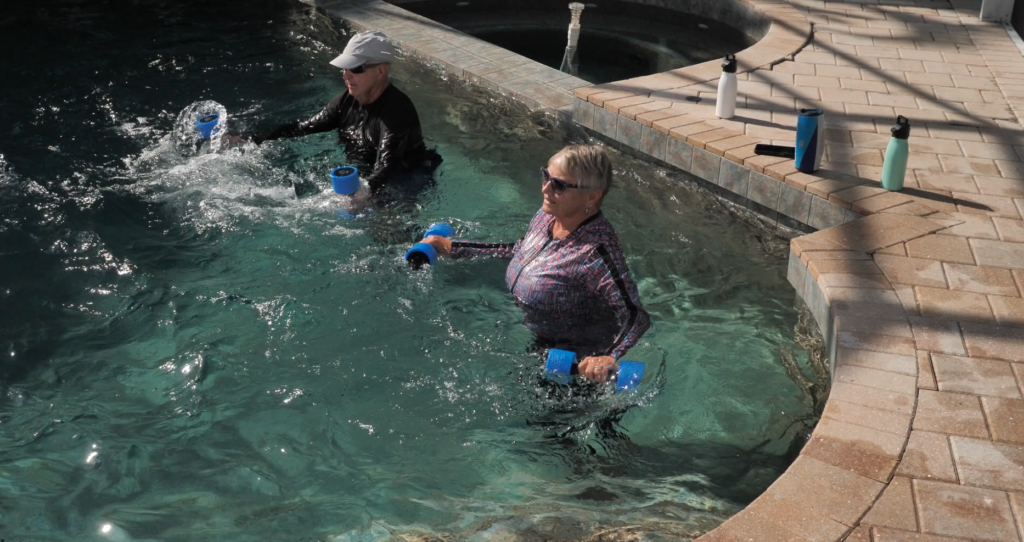When it comes to health, fitness, and aging, there’s no shortage of advice out there—but not all of it is true. Some of the most common beliefs about movement, pain, and exercise might actually be holding you back. That’s why we’re launching this myth-busting series: to separate fact from fiction and help you make informed choices for a stronger, healthier future.
Let’s dive into our first myth…
Joint pain is a normal part of aging.
If you’ve ever heard someone say, “Oh, that knee pain? It’s just part of getting older,” you’re not alone. Many people believe that joint pain is an inevitable part of aging—something we just have to accept. But here’s the truth: Joint pain is not a guaranteed part of growing older. While age can increase the risk of joint issues, there are many factors within our control that can help us maintain healthy, pain-free joints for years to come.
Aging Doesn’t Have to Equal Joint Pain

Yes, the likelihood of experiencing joint issues like osteoarthritis does increase as we age—particularly after 60 or 65. However, not everyone develops joint pain. Many older adults maintain excellent joint health and enjoy high levels of mobility well into their senior years. The difference often lies not in age itself, but in how we care for our bodies along the way.
Lifestyle Matters More Than You Think
One of the biggest influences on joint health isn’t the number of candles on your birthday cake—it’s how you live your life. Physical activity plays a massive role in protecting our joints. Regular exercise strengthens the muscles that support the joints, providing better stability and reducing strain. And contrary to popular belief, research shows that staying active doesn’t wear down your joints—it actually helps preserve them.
Diet also plays a critical role. The foods we eat can either promote inflammation or help reduce it. A balanced diet rich in whole foods, lean proteins, and healthy fats can support overall joint health. Plus, maintaining a healthy weight is one of the most effective ways to protect your joints. Every extra pound we carry puts added strain on our joints—particularly in weight-bearing areas like the knees and hips.
Pain is a Signal—Not Just a Symptom of Aging
If you’re experiencing joint pain, don’t dismiss it as something you simply have to live with. Pain is your body’s way of signaling that something is off. Chronic joint pain could indicate underlying issues like muscle imbalances, poor posture, or inflammation—all of which can often be improved with the right plan of action.
Tight connective tissues, muscle weakness, or repetitive movements performed with poor mechanics can all contribute to joint discomfort. The good news? These are all things that can be addressed through targeted exercise, stretching, and proper body mechanics. Water exercise, in particular, is an excellent tool for improving joint mobility, reducing inflammation, and building strength without added strain on the joints.
Movement is Medicine

Perhaps the most powerful myth-buster of all is this: Movement helps preserve joint health. Regular, low-impact exercise—like water workouts—helps keep joints lubricated, improves range of motion, and strengthens the muscles that support and protect the joints. When we move, we nourish our joints. When we stay still, they stiffen and weaken.
The Bottom Line
Joint pain is not an inevitable part of aging. It’s often a reflection of how we use—or don’t use—our bodies. By staying active, nourishing our bodies, and addressing underlying issues early, we can set ourselves up for stronger, healthier joints at any age.
It’s never too late to rewrite the story of how you age—and the best time to start is now.
Thanks goes to Lori Sherlock for sharing her expertise with this article, originally a lesson from inside the Wavemakers Pro coach tip library. Lori is a Wavemakers mentor coach who creates workouts and provides masterclasses for Wavemaker Pros. Learn more about her work here.
